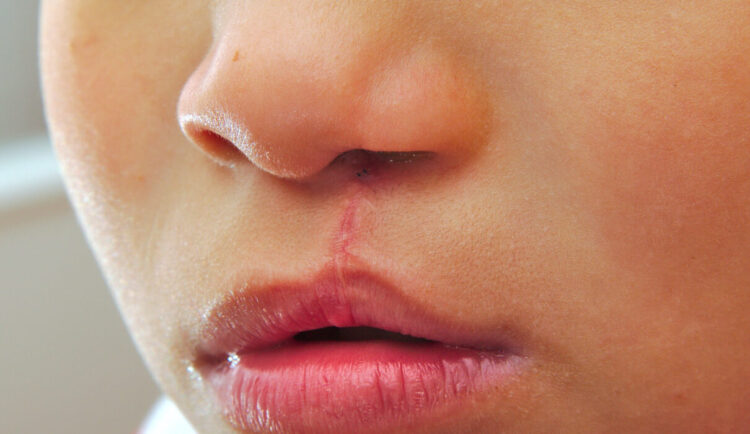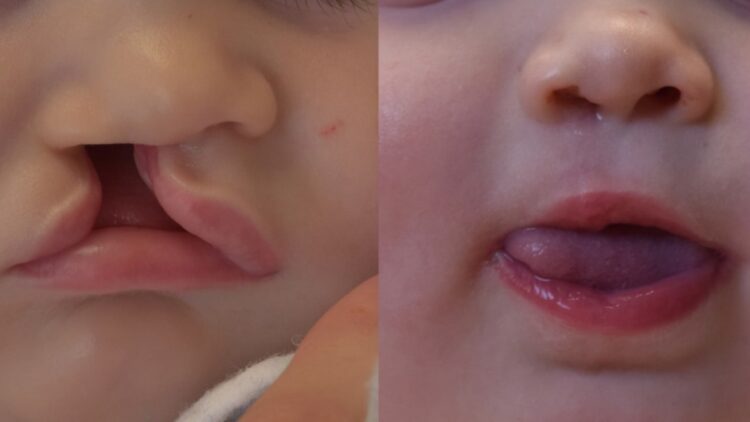If you have been through the experience of having a baby with a cleft lip or cleft palate, then you know how scary it can be. It can be difficult to know what to do when your baby is born with this common congenital anomaly, but there are ways that you can help them! We spoke with Toronto’s top plastic surgeon Dr. Martin Jugenburg about this topic, and asked him some of the most common questions about cleft lip or cleft palates.
Page Contents
What is a cleft lip or cleft palate (CLP)?

Source: sonashomehealth.com
Dr. Jugenburg notes that clefts of the lip and palate are congenital disorders, meaning babies are born with them as a result of an abnormal formation of the lip and palate during the pregnancy. Both the lip and the palate form during embryogenesis, as these structures develop from the sides and grow towards the middle where they meet. Sometimes during this formation they do not come together in the middle, leaving a gap, a cleft. This gap can vary from a partial gap, to a thin gap, to a really wide gap. Although this is a rare problem, it still occurs often enough that it is the most common type of birth defect. There are specialized clinics to help these children across the country, and plastic surgeons often travel around the world on missions to provide cleft lip and palate repairs to children in poorer countries that do not have the resources or healthcare coverage to help these children.
How common is CLP?

Source: verywellhealth.com
- About 1 in every 1,600 babies is born with cleft lip with cleft palate in the United States.
- About 1 in every 2,800 babies is born with cleft lip without cleft palate in the United States.
- About 1 in every 1,700 babies is born with cleft palate in the United States.
What are the causes of CLP

Source: mydr.com.au
There are no known obvious causes or genetic mutations that are associated with CLP development. A combination of genetic predispositions and environmental factors is likely responsible:
- Women who smoke during pregnancy are more likely to have babies with CLP
- Women with diabetes have a slightly increased risk of having babies with CLP
- Certain medications may increase the risk of CLP when taken during the first trimester when the embryo is forming
Cosmetic Issues with CLP

Source: pinkappleaesthetics.com
The most obvious issue with CLP is the cosmetic one. An untreated, wide cleft can be difficult to deal with for that reason alone. A surgical repair, however, can address the issue and avoid the stigma of this facial abnormality. Perhaps the most famous cleft lip patient today would be Joaquin Phoenix. Many people may not even realize it, but he is a patient with a surgically repaired cleft lip. The social implication of CLP is related to the cosmetic appearance and correlates with the extent of the cleft. But as demonstrated by individuals such as Joaquin Phoenix, when properly treated, these patients should have minimal if any social implications, and are able to succeed in life!
Does CLP have any complications?

Source: ent-center.com
Aside from the obvious cosmetic issues, there are various functional problems that CLP patients face.
- Feeding difficulties – because of the cleft, an infant may be unable to suck properly because the roof of the mouth is not formed completely
- Ear infections – anatomic abnormalities affect the formation of the ear tubes that connect the middle ear and the throat, leading to recurrent infections that can then lead to hearing loss.
- Abnormal speech – because of the gaps in the lips and the oral cavity, it may be difficult to create certain sounds, and the person sounds ‘nasal’. They may also experience a delay in speech.
- Abnormal teeth – because of the bony abnormalities, teeth may not be aligned properly and orthodontic treatment is usually required.
Are there ways to prevent CLP?

Source: ruthswissa.com
As CLP is multifactorial (combination of genetic and environmental factors), one can attempt to limit the environmental risk factors described above. When it comes to genetic factors, there are some known genetic syndromes (collection of various medical problems as a result of a particular mutation) that are associated with CLP and parents can be screened for those to lower their risk of having a baby with a CLP. There are over 400 conditions and syndromes that include a CLP as one of their medical problems. However some people may develop an ‘isolated’ CLP meaning it is the only issue, they do not have any other medical problems and do not have a genetic syndrome.
When asked about his thoughts on CLP’s effect on families, Dr. Jugenburg says “CLP has obvious implications for the child, but parents are not left out of the suffering. However, most studies in the western world have shown that both the child and parent often show great resilience in dealing with the social implications of CLP. This was demonstrated by the fact that withdrawal behaviour of these families is not very different from the average population.”
As a final note, Dr. Jugenburg states that, “Canada and the US have good support in place for CLP patients and their parents. Most major centers have dedicated CLP clinics where patients and parents can turn to for treatment and support. You are not alone in this. The most important thing to remember is that this congenital malformation is not life threatening. Your baby and your family are going to be perfectly fine!”





